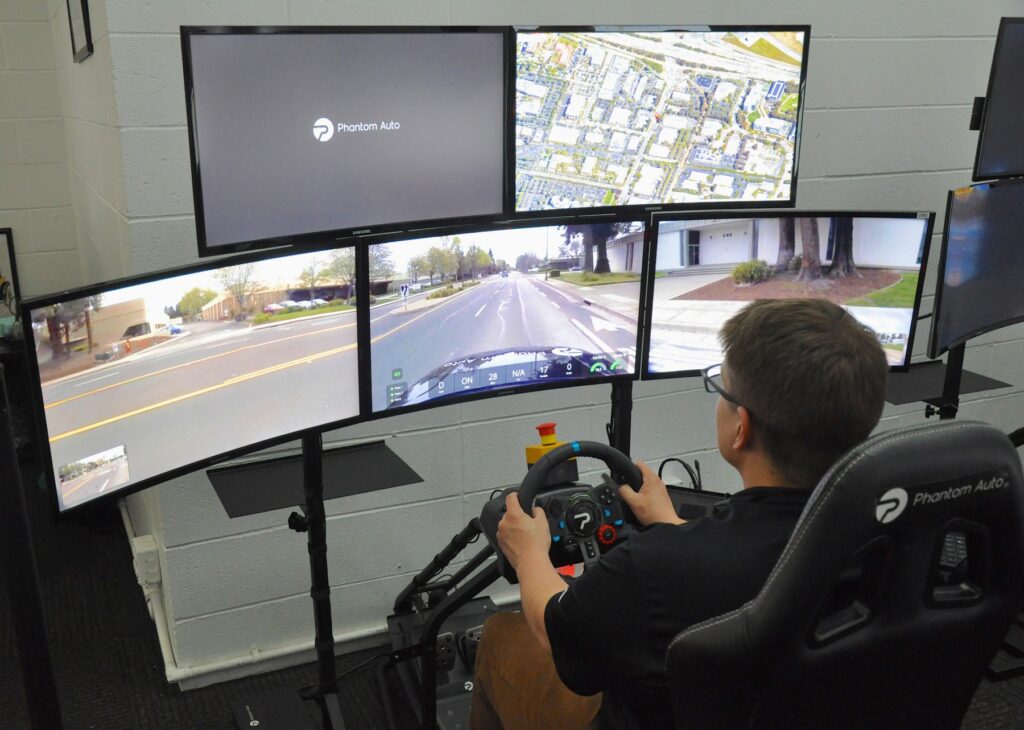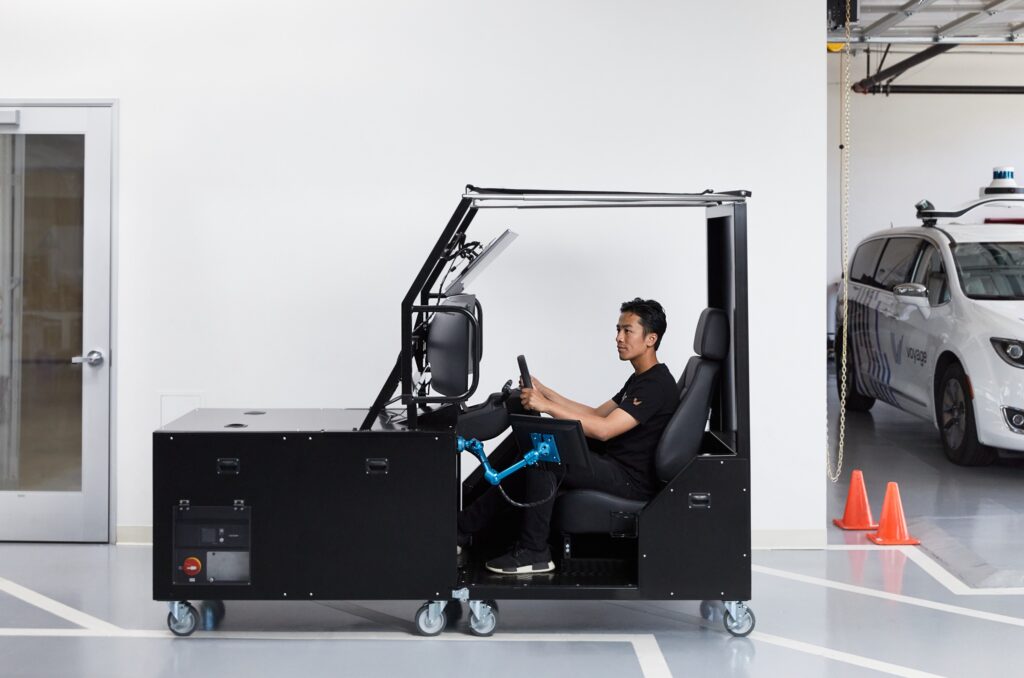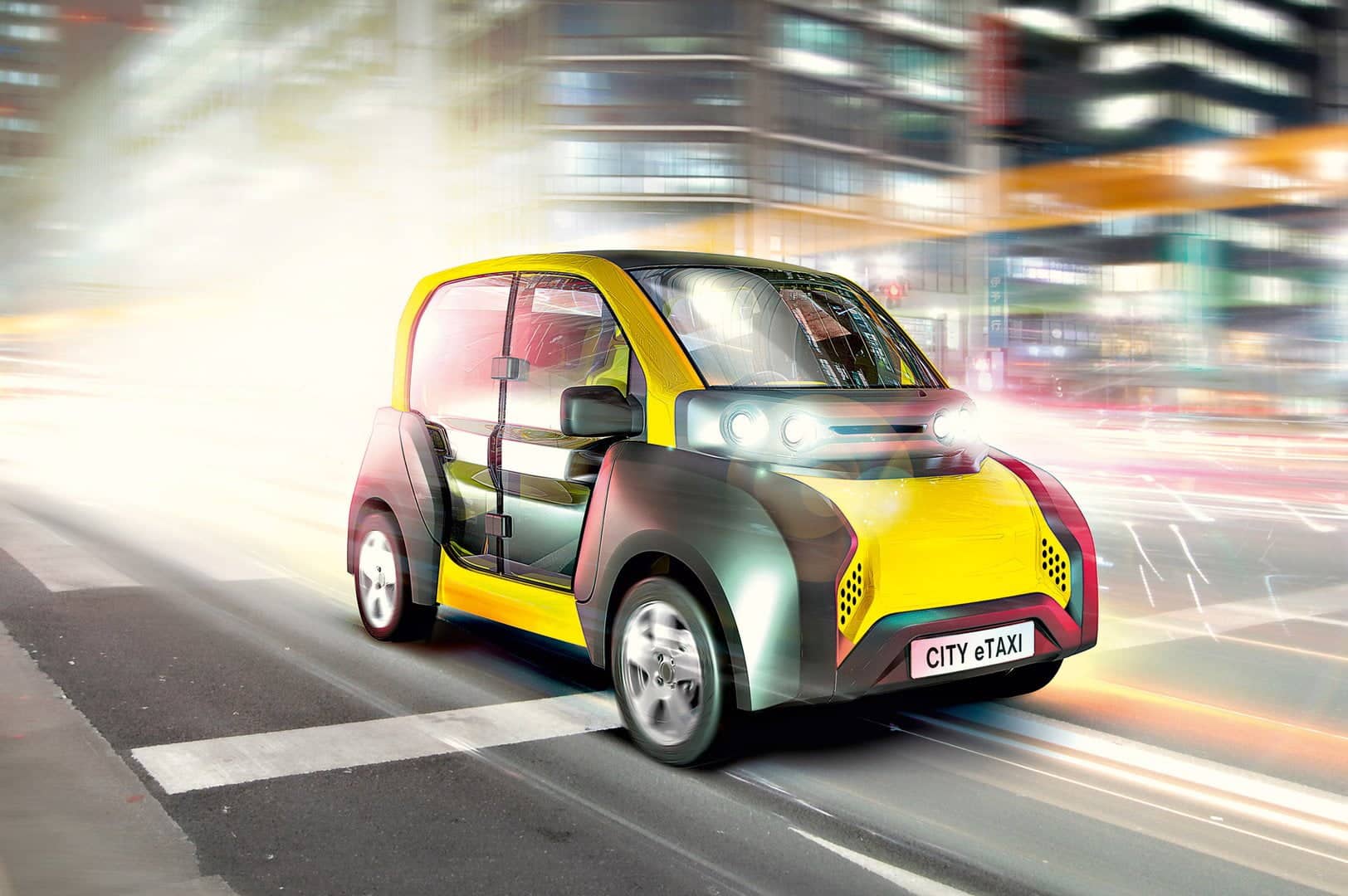In ridesharing, the highest cost per trip is the driver. In the vast majority of taxi or Uber rides there are at least two licensed. One more than it would take.
Imagine a ridesharing future where a rental car is more convenient than an Uber. A rental car on demand, door to door. In the USA they already call it ODDcar: On demand Door to Door. Practically? A car controlled by a remote driver.
Here's how it works
You call a car just like it's an Uber, or a Taxi. Within minutes, an empty car pulls up to the curb. Instead of sitting in the back seat, you take the wheel and drive. Once at its destination, the car sets off on its own towards other customers.
How do you get the empty car to and from the rider? Autonomous vehicles will answer this question in the future of ridesharing, but in a decade or more. In the meantime, we will have to rely on remote control, otherwise known as teleoperation.
The autonomous vehicle industry has developed teleoperation capabilities for years, but have been used as a security system. Tests have recently been carried out on similar services with cars remotely controlled by a remote driver, I told you about it here.
If we promote teleoperation as the primary means of vehicle operation we will have a faster, safer, cheaper and more acceptable route for driverless vehicles on public roads.

Why the ODD car is important in the future of ridesharing
On-demand and door-to-door car rental is not an easy thing. It's about bringing a whole new class of vehicle to public roads. The future of ridesharing involves eliminating the driver: one day we will call a taxi, it will pick us up anywhere and take us anywhere. Alone, with no other humans in the cockpit except us. It will happen thanks to autonomous vehicles, capable of moving completely on their own.
Autonomous vehicles will lower the costs of the service, therefore the price. And they will ultimately transform the market. What if we could reap the benefits of autonomy in a few years instead of decades?
The potential of the organization
A vehicle active on a rideshare network spends more than half of its time traveling. He spends 30-40% of his time without a passenger. In practice, a driver is busy 100% of the time, but only earns 60%, which is what he gets from the time he actually has a passenger.
In the future of ridesharing, with an ODDcar, a remotely driven car, the paid driver is remote and only engaged when the vehicle is repositioning itself between trips. If we assume that at least 20% of a car's time is spent repositioning, a remote driver can support up to 5 times as many vehicles as traditional rideshare drivers.
Obviously, guarantees will be needed. I imagine that all remote driving operations will be performed in dedicated facilities under controlled conditions, where the remote driver's sobriety and performance will be closely monitored. Additionally, there should be technologies that securely “tether” an operator to a vehicle while it is in operation, creating clear identification of custody and responsibility. If a remote driver gets into an accident while taking a car to a customer, someone will have to pay.

Let's talk about money
What would the future of ridesharing look like in terms of costs if we adopted the remote-controlled car? Let's do the math.
To take a car on the road for a day, there are real costs. Some of these costs are paid by the rideshare network, others by the rideshare driver. Core costs fall into one of the following five categories.
| Category | Description | % of the cost |
| Net profit of the driver | The driver's earnings excluding the expenses he has to bear | 70% |
| Fuel | Petrol or diesel (LPG or electric if we talk about it later) | 5% |
| Insurance | Various covers, both for the driver and for the passenger | 10% |
| Machine maintenance | Costs distributed over the hours of use | 10% |
| Others | Various and any, even not provided | 5% |
Now suppose that the cost of placing a car share on the network for an hour is 25 euros. An invented figure, it is only used to think about it. These 25 euros would be divided like this:
| Category | Price |
| Net profit of the driver | 17.50€ |
| Fuel | 1. 25 € |
| Insurance | 2. 50 € |
| Machine maintenance | 2.50€ |
| Others | 1.25€ |
| TOTAL | 25€ |
How do these rumors transform into the future of ridesharing, with a system based on the remote-controlled ODD car? And with a completely autonomous car?
| Category | ridesharing | Car ODD | Autonomous vehicle |
| Net profit of the driver | 17.50€ | 3.50€ | 0 |
| Fuel | 1.25€ | 1.25€ | 1.25€ |
| Insurance | 2.50€ | 2.50€ | 1.25€ |
| Machine maintenance | 2.50€ | 3.50€ | 6.25€ |
| Others | 2.50€ | 1.25€ | 2.50€ |
| TOTAL | 25€ | 13.25€ | 10€ |
| saving | -48% | -60% |
Some details on the data
The most important line is the first, where i net driver earnings they drop from €17,50 to €3,50 and then to 0. The transition from €17,50 to €3,50 comes from the leverage ratio assumed on the use. As mentioned, a remote driver can drive up to 5 remote-controlled cars (just to take them to a customer, then he does everything).
The costs of maintenance they increase from left to right as we have more advanced and complex vehicles. And it also indicates that fully autonomous vehicles will be quite expensive at present. For the ODD rental car, I assume an extra €1,25 under “others” for the 4G video transmission needed to support teleoperations. In the future of ridesharing 5G will further reduce the costs and improve the performance of these rental cars.
On balance, ODD cars promise cost savings of . compared to rideshare. However, I prudently assumed that the costs would be constant. Instead, I imagined that insurance costs will decrease when autonomous vehicles, capable of guaranteeing more safety, will be at such a level of evolution as to be used on the road.
Finally, I kept fuel constant across all categories (electrification would only benefit the last two columns).
What are the benefits
The big advantage is this: in the transition from rideshare to remote controlled car, unit costs drop by a whopping 48%. When we eventually transition from remote-controlled rental cars to autonomous vehicles, an incremental reduction will be achieved of 12%. 80% of the economic change promised by the future of ridesharing comes from the remote-controlled car.
Additionally, the cost advantage of a remote-controlled car increases with the length of the trip. The longer the trip, the more pronounced the cost savings will be. ODD cars can dominate the future of ridesharing in 20-60 minute journeys (think airport trips, or commutes) and enable longer trips, currently too expensive for a taxi (multi-destination, errands, day trips , intercity travel).
A market with enormous potential, to put it briefly. And do we want to talk about the Covid unknown? The pandemic has transformed ridesharing into a vector for spreading the virus. By minimizing the number of people sharing air in a vehicle at the same time, the ODD car can be a winning element of safe transportation. The remote-controlled car eliminates human-to-human contact between passengers and drivers. They don't solve all the risks (the vehicle needs to be sanitized between trips, for example), but they improve the picture.
What is the state of teleoperation technologies?
The construction of an effective system of teleoperations (and in general of the future of ridesharing) clashes today with the vulnerabilities of connectivity networks. Because latency issues increase dramatically with speed. Therefore, teleoperation is naturally more suitable for lower speed applications. Even going up to 40km / h (up to 25mph) on local suburban roads can take advantage of a sizeable market base.
What technologies do we need to do this?
No one can say for sure, because there is no clear definition of what is “safe enough.” It will also be necessary to review the highway codes. Having said that, let's try to imagine the first driverless vehicle authorized to circulate on public roads on a large scale. It will probably be a vehicle with very limited speed, without passengers (in a first phase it will only carry goods) and a dedicated human being at all times, a sort of remote physical assistant during operation.
They sound like pretty darn close things. Fully autonomous vehicles, however, are not. The current ones are jerky and just plain creepy. Be careful: there is a difference between safety and ease of use. In the future of ridesharing there will be a period (perhaps a long one) in which autonomous technology will be very safe, but painfully slow. And it will make any user experience a disaster.
By contrast, a rental remote control car will only use its driverless technology when it is empty and needs to be repositioned. Under these conditions, it can optimize the route and speed without regard to the rush of passengers. As soon as the driver enters the cockpit it will return to being a safe, familiar, capable and fast vehicle like a normal car. The ODD car is a wonderfully reassuring way to get used to driverless vehicles. And I say more: for me a model like this (i.e. active only to reposition the vehicle) will be the best option for a long time, even when autonomous vehicles are around.
Work aspects in the future of ridesharing
Being a remote driver can be a better job than being an actual rideshare driver. Remote drivers will likely be directly employed. Income will be more predictable and remote drivers will not have the expense and uncertainty of owning and maintaining a vehicle. Not to mention that remote driving is safer and more comfortable. No risk of personal injury, neither (especially) from traffic nor from unpleasant interactions with passengers. Remote drivers are not at risk of theft or vandalism. And, of course, no risk of highly communicable airborne diseases.
Okay. You're thinking that a company could fire all the local drivers and hire them, I don't know, cheaply in a distant state. A series of small Chinese remote drivers who take my car to Naples while sitting comfortably in a small room in Guangzhou.
It will not be so. In the future of ridesharing, there are many reasons why local work would be preferred. This is not about speaking in a call center. You must have a national driving license, and be familiar with local driving habits. And then the speed of operations will be fundamental: to avoid latencies. Finally, given that the cost of drivers will reduce its weight, it will be almost irrelevant to obtain benefits from an offshore worker. Rather.
In conclusion
Yes, for me the remote-controlled car rental model will be the first large-scale application of driverless technology in the future of ridesharing. And it will be long before autonomous vehicles take over. It will be quicker to adopt, safer and also cheaper, a mix between a taxi and a rental car. Many think that the great economic change will only come when we can make the car drive itself. I do not.
The idea that the remote-controlled car will catch on long before autonomous vehicles is more than a prediction. And it forces us to act. If the last five years have taught us anything, it is that vehicle autonomy is not a sudden event: it will develop in successive moments, over a long period of time and each increase will be achieved with sweat.
From this perspective, are we investing in the right technological paths? Are we chasing the right regulatory frameworks, are we building the right vehicles?


